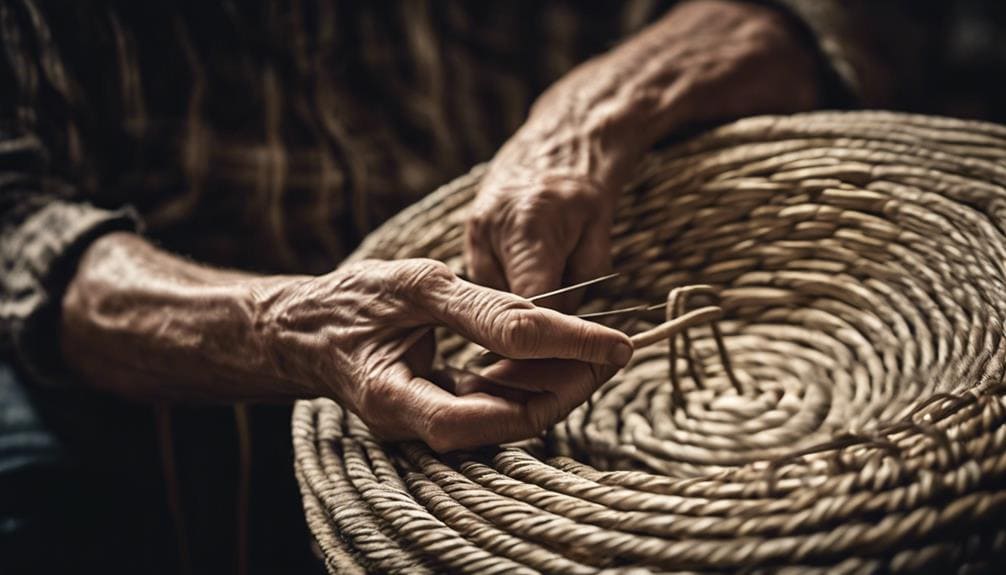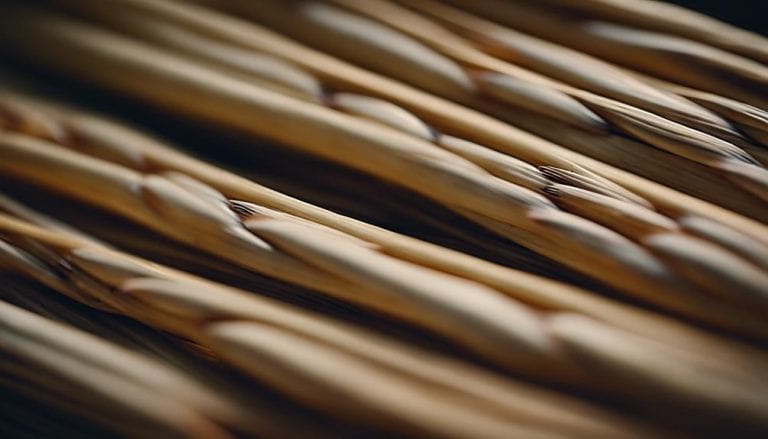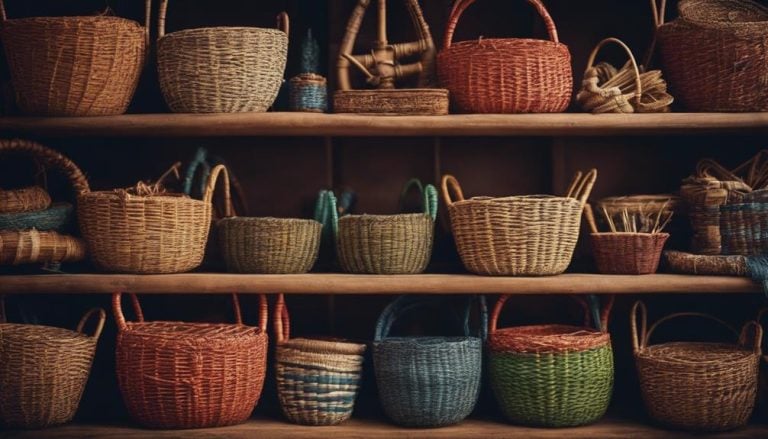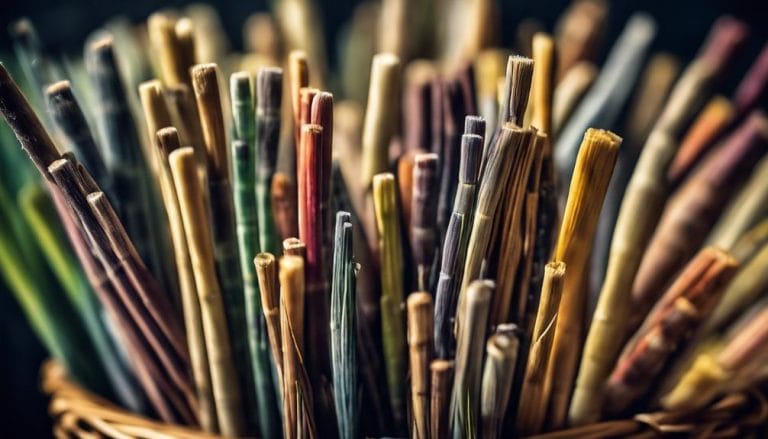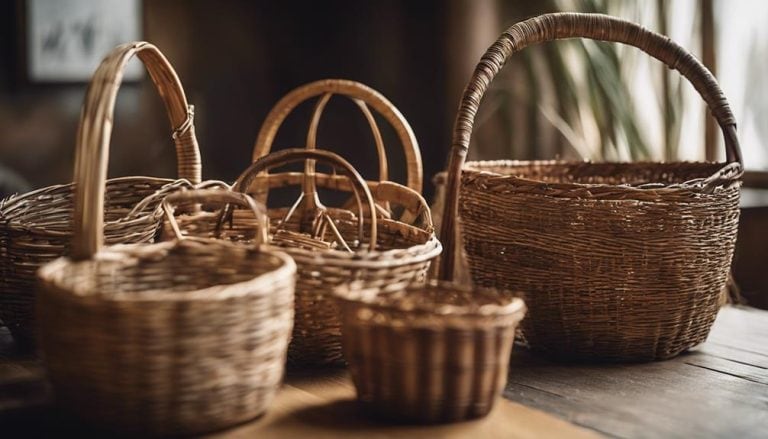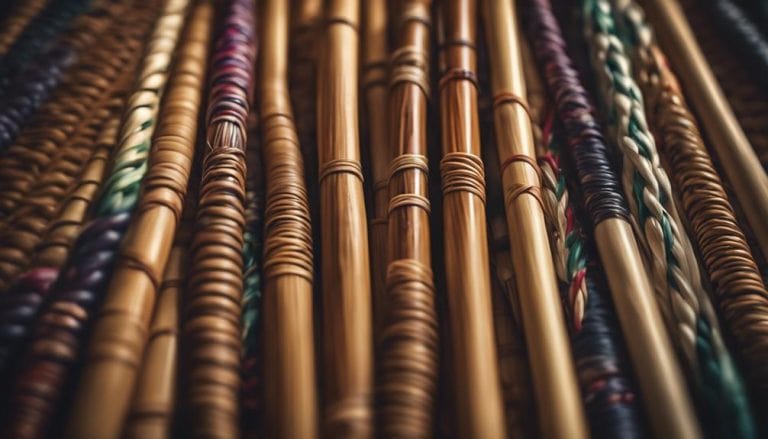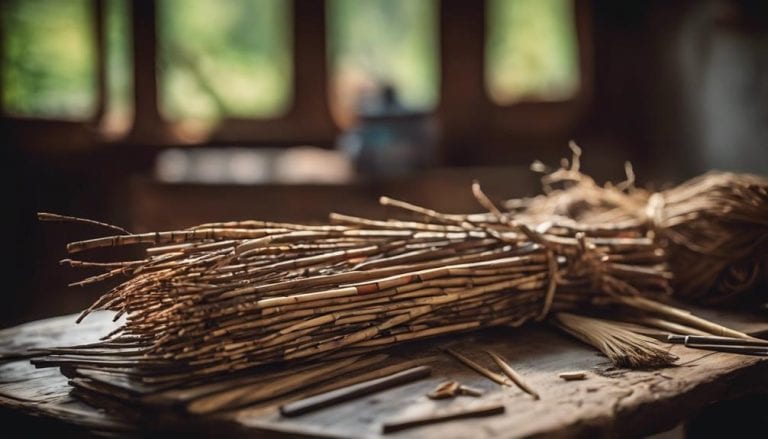Danish Cord for Traditional Basket Crafts
Back in the day, Danish Cord was a game-changer in my basket crafting journey. Its rich history intertwines with the art of weaving, offering a glimpse into a world where tradition meets innovation. As I explored the realm of basketry, Danish Cord emerged as a reliable companion, but there’s more to this material than meets the eye.
Stay tuned to discover how Danish Cord revolutionizes the world of traditional basket crafts, opening doors to a realm of creativity and craftsmanship that knows no bounds.
Danish cord is commonly used in traditional basket crafts. It is a strong and durable material that adds a classic touch to the finished products, making it a popular choice for basket weaving.
Key Takeaways
- Danish Cord weaving embodies mid-century modern aesthetics and Scandinavian design excellence.
- Crafted from eco-friendly twisted craft brown paper for durable and long-lasting traditional baskets.
- Weaving techniques like twining, plaiting, coiling, and shaping create sturdy structures and intricate patterns.
- Maintenance tips include regular dusting, gentle cleaning, and professional repairs for preserving Danish Cord crafts.
Origins of Danish Cord Weaving
Danish cord weaving emerged as a traditional craft in Denmark that intertwined paper cords around wooden frames for furniture and basketry. The evolution of this technique in the early 20th century marked a significant transition into mid-century modern aesthetics, blending functionality with exquisite design.
Its cultural significance lies in the intricate patterns and variations that showcase not only the high-quality craftsmanship but also the timeless elegance of Scandinavian design. One cannot discuss Danish Cord weaving without mentioning Hans Wegner, whose iconic chair designs popularized paper cords, further solidifying its place in furniture making.
Danish Cord weaving continues to symbolize Scandinavian design excellence, emphasizing quality craftsmanship and enduring style in every furniture piece. The attention to detail and dedication to preserving traditional craft techniques highlight the deep cultural roots embedded within Danish Cord weaving, making it a cherished art form that stands the test of time.
Characteristics of Danish Cord Material
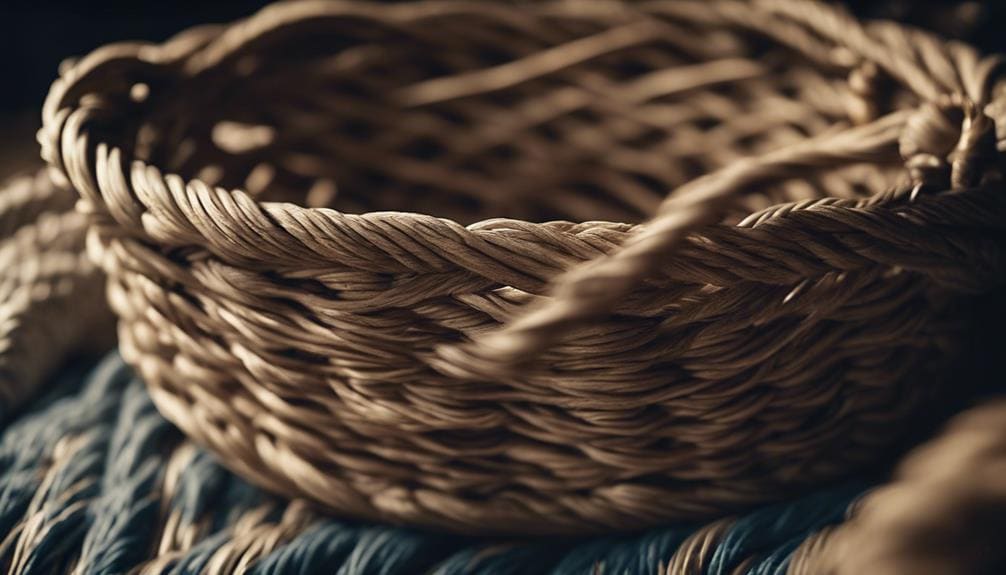
Exploring the material composition of Danish Cord unveils its distinctive characteristics that contribute to its versatility and appeal in traditional basket crafts and furniture weaving. Danish Cord, crafted from twisted craft brown paper, offers eco-friendly durability and a natural aesthetic appeal.
The cord’s various thicknesses cater to different project needs, with the 3-ply style being a common choice for authentic Danish Cord creations. Its naturally white color enhances the beauty of woven baskets and seats, adding a touch of elegance to the finished products.
This long-lasting material is versatile and ideal for repairing chair seats, creating intricate basket designs, and engaging in various crafting activities. With a generous length of 130 meters and a width of 4mm, Danish Cord provides ample material for multiple weaving projects, ensuring durability and longevity in the final craftsmanship.
| Characteristics | Danish Cord Material |
|---|---|
| Eco-friendly durability | Crafted from twisted craft brown paper |
| Natural aesthetic appeal | Enhances the beauty of woven baskets and seats |
| Crafting versatility | It is ideal for repairing chair seats and intricate designs |
| Long-lasting material | Ideal for repairing chair seats and intricate designs |
| Ample material for projects | 130 meters long and 4mm wide |
Weaving Techniques With Danish Cord
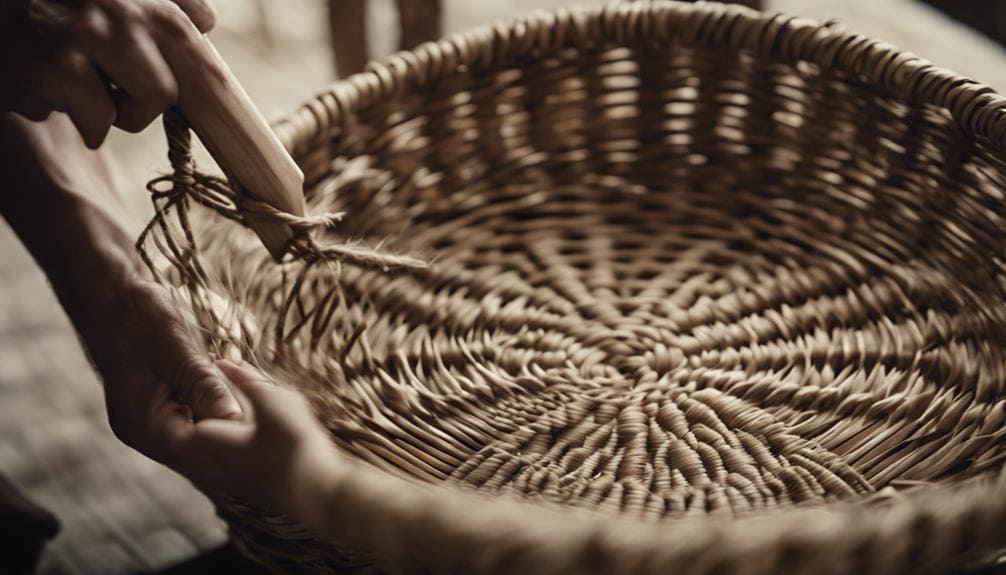
When delving into the art of basket weaving with Danish Cord, one discovers many intricate techniques that enhance the strength and beauty of the final creations. Utilizing Danish cord opens up a world of possibilities for creating unique baskets. Here are some key techniques that can be employed:
- Twining: This method involves weaving two strands of Danish cord around spokes in a twisting pattern, creating a sturdy and visually appealing design.
- Plaiting: By weaving strands over and under each other, plaiting with Danish cord produces intricate patterns that add depth and texture to the basket.
- Coiling: Danish cord can be coiled and stitched together to form the base or walls of a basket, providing structure and stability to the overall piece.
- Shaping: Advanced techniques like shaping involve manipulating the Danish cord to form curves, handles, or intricate details, adding a touch of elegance to the final product.
Exploring these techniques allows artisans to craft baskets with colorful patterns and advanced designs, showcasing the versatility and beauty of Danish cord in traditional basket-weaving projects.
Design Inspiration for Basket Crafts
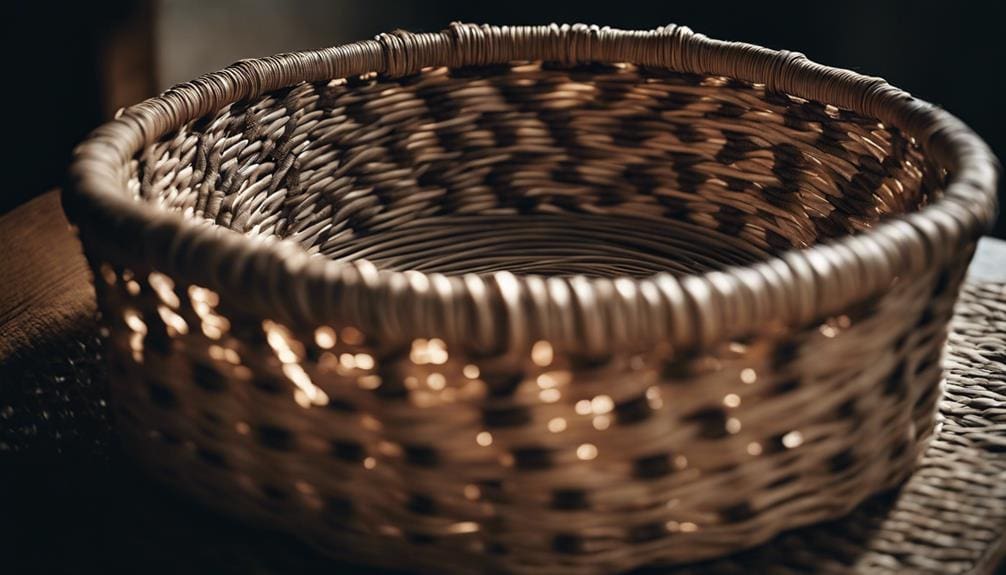
Drawing design inspiration from the beauty of nature, traditional basket crafts intricately weave elements like leaves, flowers, and vines into their patterns. These nature-inspired motifs reflect the environment and hold cultural significance, showcasing the deep connection between craft and heritage. Cultural influences play a vital role in shaping basket designs, with techniques passed down through generations, each telling a unique story.
Geometric designs and symmetrical patterns are common in traditional basket crafts, demonstrating the weaver’s precision and skill. The intricate weaving techniques create visually striking, functional, and aesthetically pleasing pieces. Symbolic motifs often adorn historical basket crafts, representing beliefs, traditions, or narratives within the community.
The color palette used in these crafts is influenced by natural dyes, offering earthy tones and vibrant hues that enhance the overall beauty of the woven baskets. Each design element is thoughtfully chosen to create a harmonious blend of artistry and tradition, making each basket a unique cultural artifact.
Maintenance Tips for Danish Cord Baskets
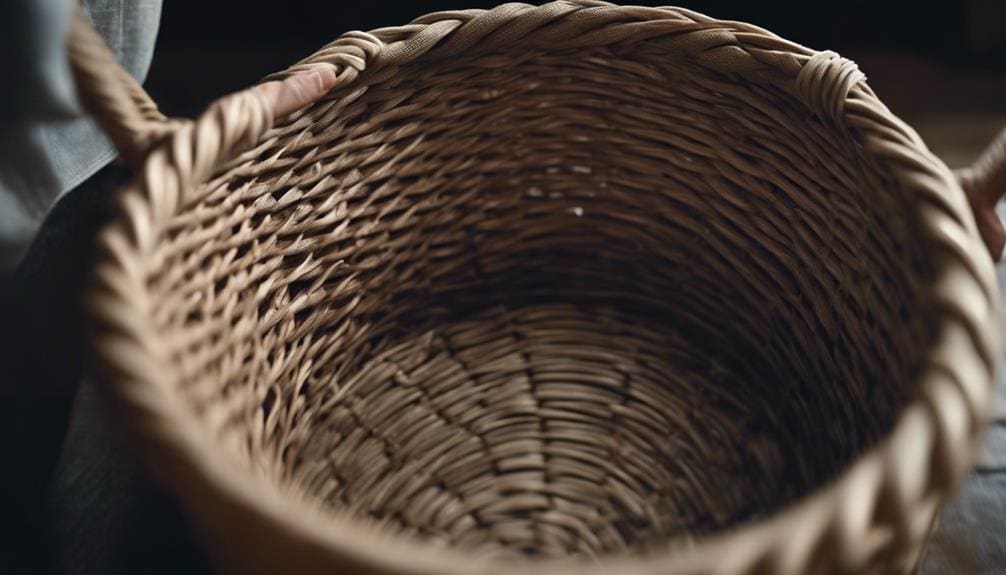
Maintaining Danish Cord baskets requires regular dusting to prevent buildup and preserve their appearance, along with avoiding prolonged exposure to direct sunlight to prevent fading and weakening of the material. When caring for your Danish Cord baskets, consider the following tips:
- Cleaning Methods: Regularly dust the baskets with a soft cloth or a gentle brush to prevent dirt accumulation. In case of spills or stains, use a damp cloth and mild soap to clean the affected area without damaging the delicate Danish Cord weave.
- Preservation Techniques: Store the baskets in a cool, dry place away from direct sunlight to maintain their color and strength. Avoid placing heavy objects on top of the baskets to prevent deformation of the woven structure.
- Repair Options: Inspect the baskets periodically for any wear or damage. If you notice loose cords or significant issues, seek professional assistance to repair the baskets properly.
- Professional Assistance: If you are unsure how to address a specific issue or if the damage is extensive, consult a professional specializing in Danish Cord basket repair to ensure the longevity of your cherished pieces.
How Can I Use Danish Cord for Traditional Basket Weaving?
You can find a helpful tutorial online to learn Danish cord basket weaving. Using Danish cord for traditional basket weaving can add a unique touch to your projects. Follow a Danish cord basket weaving tutorial to learn the techniques and create beautiful woven baskets.
Incorporating Danish Cord Into Projects
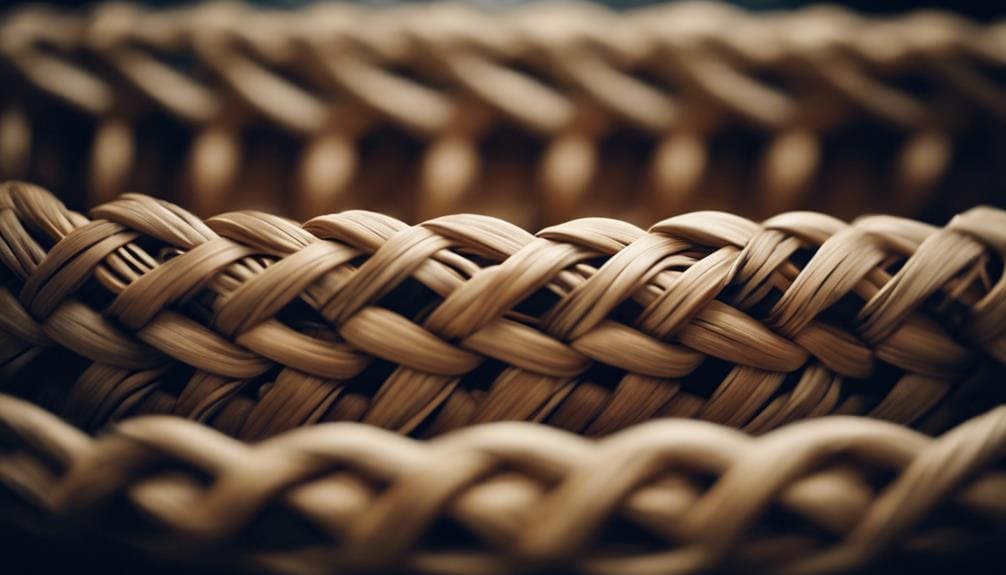
Incorporating Danish Cord into basket crafting projects elevates the authenticity and traditional craftsmanship of the finished pieces. The versatility of Danish Cord allows for the creation of intricate designs and patterns, enhancing the visual appeal of the baskets. Danish Cord offers a wide range of options to suit different preferences and styles when considering color combinations.
Whether opting for a monochromatic scheme for a classic look or mixing vibrant hues for a more modern feel, the cord’s smooth texture beautifully showcases the chosen colors. Furthermore, the creative patterns that can be achieved with Danish Cord are limitless. From simple geometric shapes to more elaborate woven motifs, this material provides ample room for artistic expression in basketry.
Its 3-ply twisted structure ensures durability and strength and adds a tactile element to the finished pieces. By incorporating Danish Cord into basket crafts, one can truly imbue their creations with a sense of tradition and craftsmanship that is both timeless and captivating.
Frequently Asked Questions
What’s the Difference Between Laced and Unlaced Danish Cord?
I prefer laced cord for its decorative twist pattern, adding flair to weaving projects. Unlaced cord, smooth and straight, offers sturdy support. Both choices come in various color options, ideal for chair repair to bring a touch of elegance or functionality.
What Are the Different Types of Danish Cord Weaving?
In modern applications, Danish Cord weaving offers intricate decorative techniques. With historical significance and cultural influences, it provides versatility. Laced and Unlaced styles cater to different projects, allowing for creative expression and durability in traditional crafts.
What Is the Difference Between Fiber Rush and Danish Cord?
I’ve explored the differences between Fiber Rush and Danish Cord in traditional crafts. Fiber Rush, with its sturdiness, suits larger projects like chair weaving, while Danish Cord’s finer texture excels in intricate patterns for smaller crafts.
What Is a Danish Cord Used For?
Danish Cord is a versatile material ideal for chair seating and home decor. It adds a touch of Scandinavian charm to DIY projects and outdoor furniture. Its durability and flexibility make it perfect for creating intricate designs.
Conclusion
After exploring the origins, characteristics, weaving techniques, and design inspiration of Danish Cord, one can truly appreciate its versatility and quality in traditional basket crafts. So, why not add a touch of Danish Cord to your next DIY project and experience the beauty and durability it brings to your creations? The possibilities are endless for incorporating this timeless material into your basket-weaving endeavors.

